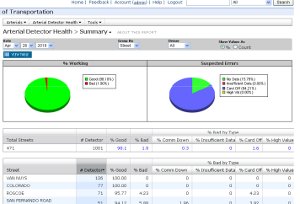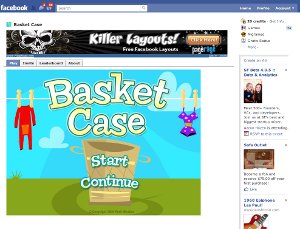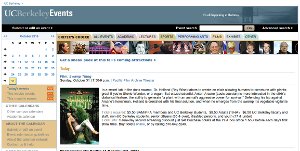As Eighteen Intelligence is a new company, most of our current work is incomplete, not ready to show off. However, we can show some of the projects completed at previous companies.
TMCAL
In 2009 and 2010, Leon was the VP of Engineering for Berkeley Transportation Systems. While there, he led several projects that helped BTS move into new sectors. One of them was TMCAL, an automated logging system for TMC (traffic management center) operators. The users of the system sit in a dark room all day, monitoring traffic problems and notifying the proper agencies. Information about accidents flows in from a public CHP feed and a list auto-updates every few seconds. Operators “capture” the CHP information and begin managing field elements, such as the large electronic signs you see on freeways in California.

Management of roadways in California is divided into 12 districts, each of which runs a TMC. Each TMC, in turn hosts an installation of TMCAL that communicates with a central server at headquarters, in Sacramento. In the event of communication loss, each TMC can continue operating, and when communication is restored, the district server will sync back up with HQ. As long as all communication lines are working, operators at HQ can monitor any district.
The application was coded by a team of three engineers using PHP, MySQL, Zend Framework and Yahoo’s YUI. The forms in the site make heavy use of autocomplete and Ajax-powered validation. Operators, for example, may enter a location on a freeway by county-route-postmile and the system automatically identifies it by name, such as “Alhambra Ave Exit”. As the application manages large lists of field elements and activities, YUI’s datatable widget is also gets a heavy workout. All tables use sorting, pagination and filtering. They also update their contents using Ajax as new information is available.
The TMCAL project was in a final pilot phase in the Fall of 2010, and was expected to go live in the state in 2011.
Arterial PeMS
In 2009 and 2010, Leon led a team adding support for arterials to the BTS flagship, PeMS. Already established as the leading solution for measuring freeway performance, BTS expanded into the performance of surface streets by completing projects in San Diego and Los Angeles.

Consuming terabytes of sensor data is a difficult problem solved by BTS in years past. Incorporating arterial data provide a new set of issues. In particular, describing the topology proved to be much more difficult. Cars moving down the freeway have limited options for changing direction. Cars on streets can change streets every block. They can even turn into a driveway. Cars getting on the freeway may stop for a metering light. Cars on surface streets are governed by signals that can restrict left and right turns as well.
PeMS expanded to include intersections, links between them (streets) and points along the links to represent locations of detectors. It also gained expanded to include signal timing plans. Performance measurement is calculated based on the signal timing plans or with an estimated plan when the exact timing of the lights is not known. The system also gained an ability to measure the health of the detectors in the field.
Work in 2010 included a sophisticated configuration editor that allows administrators to managing detectors placed in the field. And parallel to all this work, the user interface for PeMS was enhanced to use Yahoo’s YUI framework.
The effort required the participation of the entire BTS staff of engineers working in Perl and PHP against an Oracle database. A lot of effort went towards project management in order to meet tight deadlines.
Arterial functionality can be seen on the Caltrans version of PeMS at http://pems.dot.ca.gov/.
Basket Case

Basket Case is a game hosted on Facebook. The user interface is Adobe Flash. The backend is PHP using MySQL for high scores and talking to Facebook using their API.
The game was designed by Red i Studios, a highly creative company with many successful games in their portfolio for big brands such as Marvel, TNT and LeapFrog. Aside from the appealing look and feel of the game itself, it also features the amazing ability to be retooled easily for any specific brand. Any company seeking a quick presence on Facebook should consider contacting Red i Studios.
We implemented all backend code and the secret sauce necessary to host the game on Facebook. Flash maestro, Dayvid Jones, implemented the frontend of the game.
UCB Events Calendar
The University of California in Berkeley maintains a staff just to manage events on campus. It’s a big job because every organization on campus creates separate calendars of events. Before we got involved, events were merged by hand into a single calendar. The UCB staff led by Jeffrey Kahn brought us the idea of a highly automated and customizable solution. Leon led the team on this project while at Clear Ink.

One of the most challenging aspects of building this application was dealing with repeating results. Microsoft Outlook and Google Calendar make it seem easy, but representing complex rules for how an event repeats according to rules (e.g. every 3rd Tuesday) in a concise manner was a fun problem to solve. The application also included a robust system for allowing events to be exported as XML and transformed by XSL. The effort required a team of four engineers to complete plus the crucial help of the UCB events staff.
The UCB events calendar can be used at events.berkeley.edu.
JMH WHC
The Women’s Health Center run by John Muir Health in Walnut Creek, California offers classes related to women’s health. In particular, the WHC provides important classes to parents-to-be. At the time, our team maintained the marketing site for JMH and we saw the opportunity to automate class enrollment. Crude desktop-based software wasn’t cutting it for the team at the WHC, and enrollment was done strictly by phone. We brought the whole experience to the Web. Leon completed most of the coding for this project personally while working for Clear Ink.

Managing classes and students is not the typical e-commerce project. Beyond charging credit cards, the structure of the catalog is radically different, requiring a unique approach.
On the front end, students can browse through classes by topic, choose a particular instance of the class and sign up.
On the backend, administrators can create classes and instances of the classes called sections. Each section defines a schedule of meeting times. It also meets in a certain place, has a maximum class size and is taught by an instructor.
In addition to the Web interface, WHC administrators continue to offer phone service. The backend interface includes the ability to enroll users by proxy. Administrators may also break the rules of maximum class size or rules about signing up for a class after it’s begun. The backend also provides reporting to show performance of classes and administrators.
The JMH Women’s Health Center class search can be viewed at https://www.johnmuirhealth.com/index.php/whc_search.html.
Autodesk Podcast

In 2005, podcasts were bleeding edge, perhaps too new for most people. Yet a podcast was the perfect way for Autodesk to communicate their technology savvy. Leon led the team on this project while at Clear Ink.
Every year, Autodesk marketing goes on the road to promote their products. In 2005, we recorded audio of the keynotes at each stop as well as extemporaneous conversations with people attending or speaking. We used Drupal for the platform of the site and received raw audio immediately after the event concluded. Our team rushed to prepare the finished podcasts that included intros and outros.
